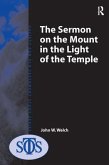As war and terrorism continue to rage over the Holy Land, the Temple of Jerusalem, arguably the most famous sacred structure in world history, looms in the background as a symbol of past glory, a place of religious worship, and a site to be contended over and coveted. This book offers a general history of the meaning, importance, and significance of the Temple of Jerusalem, in both the religious and the political arena. It begins with the construction of the Temple, its destruction in 587 B.C.E., its reconstruction in 516 B.C.E., the vast enlargement during the time of the Idumean King Herod, around 20 B.C.E., its final destruction in 70 C.E., and its dynamic and abundant afterlife as the leading influence in the construction of Jewish synagogues, Christian cathedrals, and Islamic mosques. But the Temple has also been at the center of much political and religious controversy, and Lundquist explores the issues and conflicts that have erupted over this sacred place, considers the meaning and importance of the Temple to Christianity, Judaism and Islam, from ancient times to the present, and concludes with a careful consideration of the continuing religious and political tensions. On September 28, 2000, Ariel Sharon visited the Temple Mount (also called Al-Haram As-Sharif) in Jerusalem, igniting what has come to be known as the second intifada. But why would such a visit to a religious site set off such a string of violent responses that continue to this day? The answer lies in the history of the Temple of Jerusalem, which once, indeed twice, stood in the spot known today as the Temple Mount (to Jews) and the Dome of the Rock (to Muslims). A holy place to three of the world's main religions-Christianity, Judaism, and Islam-the Temple of Jerusalem is, arguably, the most famous sacred structure in world history and figures prominently in Apocalyptic writings. Yet, it is almost entirely absent, in all its phases, from the archaeological record, as the sacred nature of the site prohibits any excavation.
Hinweis: Dieser Artikel kann nur an eine deutsche Lieferadresse ausgeliefert werden.
Hinweis: Dieser Artikel kann nur an eine deutsche Lieferadresse ausgeliefert werden.








